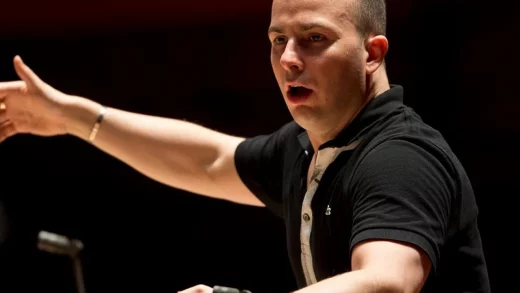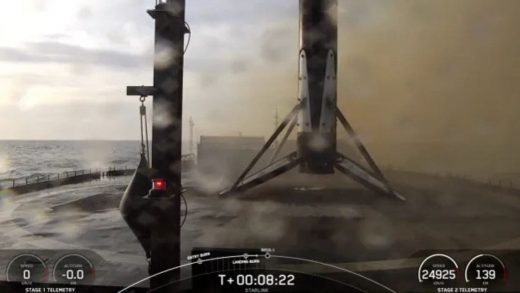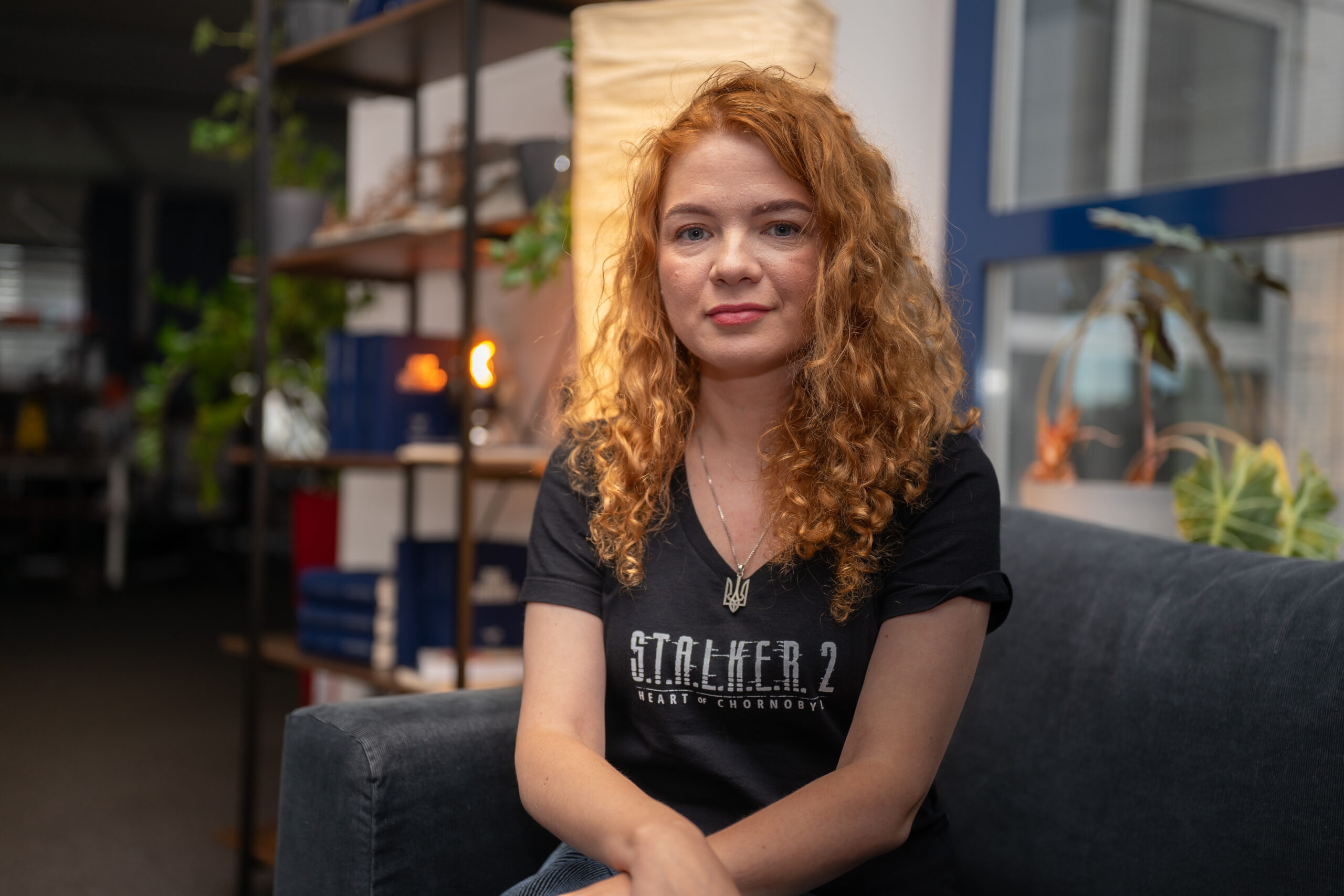
They’d been on edge for months. As winter wore on and Russian troops amassed on Ukraine’s border, they prepared a fleet of well-stocked buses, whose drivers stood by around the clock just outside the company’s headquarters.
When the troops invaded on Feb. 24, 2022, it was 4 o’clock in the morning and in that eerie dawn, GSC Game World had already activated their emergency plan to relocate their employees and their families to a small town near the Ukrainian border.
For this game studio, this wasn’t a game.
“The first day was chaotic and unnerving. For most, it began with frantic early morning calls to relatives across the country… Ask anyone how they found out, and they’ll tell you as if it happened 10 minutes ago – something etched into memory forever,” says Mariia Grygorovych, creative director at GSC.
“It was probably the worst day of our lives. Certainly one of the worst. I wouldn’t say there was outright panic. We had to stay focused every second. The emotional toll hit later, once most of the evacuation process was completed. But the fear was real, and so was the danger.”

‘I realized I have a lot to lose’
That danger left technical producer Vlad Lebedynets no other option but to flee his country to save his family. “I just wanted to bring my pregnant wife to safety. Everything else didn’t matter,” he says. “I realized I have a lot to lose.”
They were part of the first wave of employees and their families – about 500 altogether – who left Kyiv before making a new home in Prague. When he, his wife and his mother approached the Hungarian border on foot, in the snow, he brought only a backpack to carry a video card processor for his computer, two sticks of RAM and a couple of T-shirts.
“Everything I needed was in it,” says Lebedynets. “I’m not so attached to stuff.”
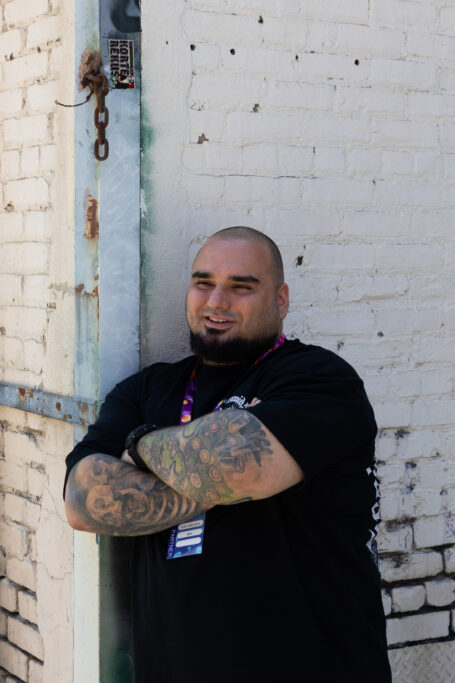
At the time, however, his mother found that she was too attached to Ukraine to leave it.
“She had a meltdown when we were about to cross the border and went back to Kyiv. She was on a train the night the bombings began. And after a few days, a rocket hit the building in front of her house. Then, she decided to join us,” Lebedynets says.
But his 54-year-old father stayed in Ukraine. He served in the military when he was much younger and has recently been conscripted into the army. “Of course I’m worried about him. There’s nothing I can do. I guess it’s life,” he says, shrugging.
Some GSC employees decided to defend their country and volunteered to serve in the military. Friends and relatives have died. About 200 of the studio staff are still in Ukraine.
For many employees, including Lebedynets, who has been in the gaming industry for a dozen years, the last three with GSC, focusing on the job has become a welcome distraction.
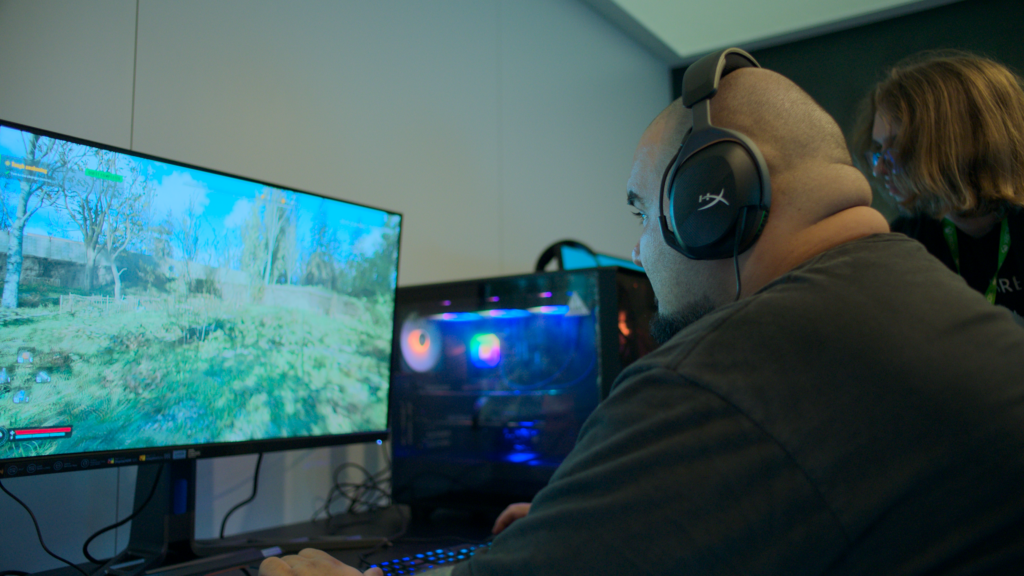
“Working on the game, working problems to find solutions, helped keep me a little bit sane,” he says. “It’s a wild ride. And honestly, sometimes I wonder how the hell we managed to go through all of this. A team is always your second family and also is your second home.”
His daughter is now 2 years old, and his game is about to be born.
Frozen in time, full of surprises
GSC is in the homestretch of finishing S.T.A.L.K.E.R. 2: Heart of Chornobyl*, the sequel to an award-winning PC franchise that has sold more than 15 million copies worldwide. Originally scheduled for release in 2022, it will at long last be available Nov. 20 on Windows 10/11, Steam, Xbox and with Game Pass.
Creating a bigger and better version of a beloved game is never easy, but this already arduous task was thrown off kilter by an invasion and war that forced an evacuation to another country and the re-creation of their studio there.
While PC players may be familiar with previous iterations of the game, newcomers may need a little bit of a primer. First, the name: It’s not what you think. Stalkers are bounty hunters who trespass into the post-apocalyptic exclusion zone. They need to acquire food, water, medicine and other supplies while fending off mutants and deadly anomalies in this first-person shooter game.
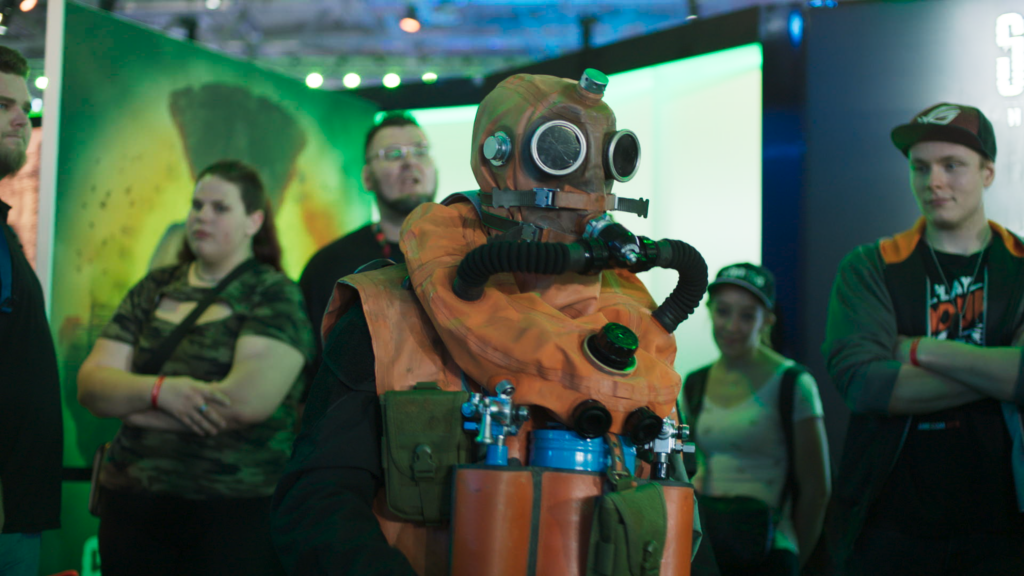
They’re the main characters who are trying to survive in the zone, the site of a disaster at the Chornobyl nuclear plant in 1986 (and in the game, it happens again in 2006). Hardcore fans have given stalkers something of a cult following, with cosplays at conventions and themed events.
In the game’s barren environment, you are an explorer in a place frozen in time but full of surprises. Those drawn to horror and action-adventure movies, as well as dystopian science fiction, will see the appeal of this non-linear play.
The biggest difference from previous versions of S.T.A.L.K.E.R. is the addition of Unreal Engine 5, a 3D creation platform that provides tools and assets for game developers to create expansive worlds like the exclusion zone with unprecedented visual fidelity.
In the past, moving to and from major locations required players to download those experiences, which interrupted that journey of discovery. Now this open world flows from place to place without the need to wait for new locations to load, giving players a truly immersive experience.
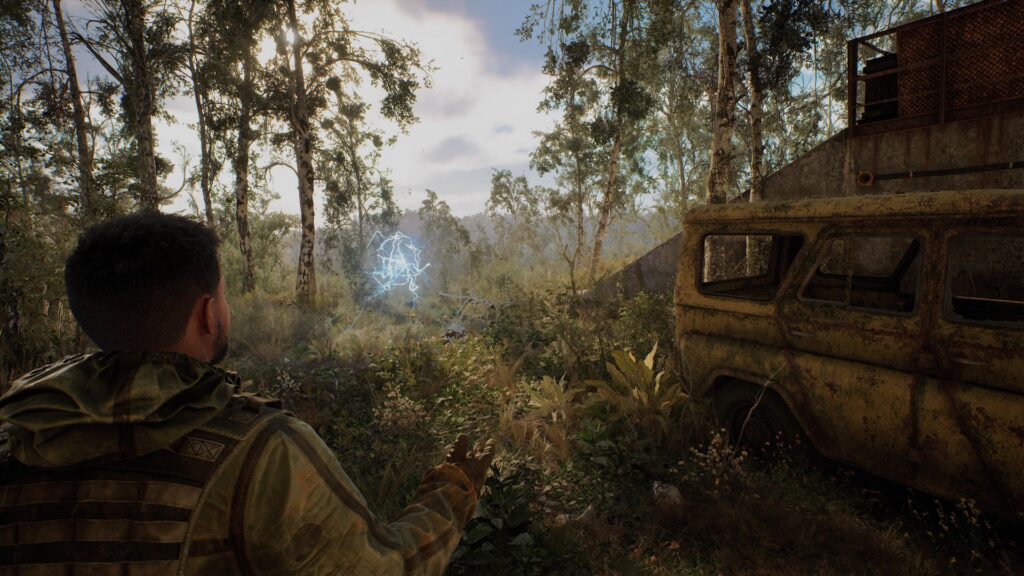
Lebedynets grew up playing games on PCs and remembers playing the first S.T.A.L.K.E.R. when he was in middle school.
“A guy from my class brought the game to school. It had just come out that day. I ran back home to my parents to ask for money, promised to do chores. I ran to the nearest store and got a collector’s edition, my first licensed copy of the game. I promised my mom to keep my room clean for a month,” he jokes. (That lasted three days.)
“I loved it as a kid and to recreate this in a new game was a challenge, but I think we achieved it.”
For the first time in the series’ history, the new game will launch on consoles the same day as the PC launch.
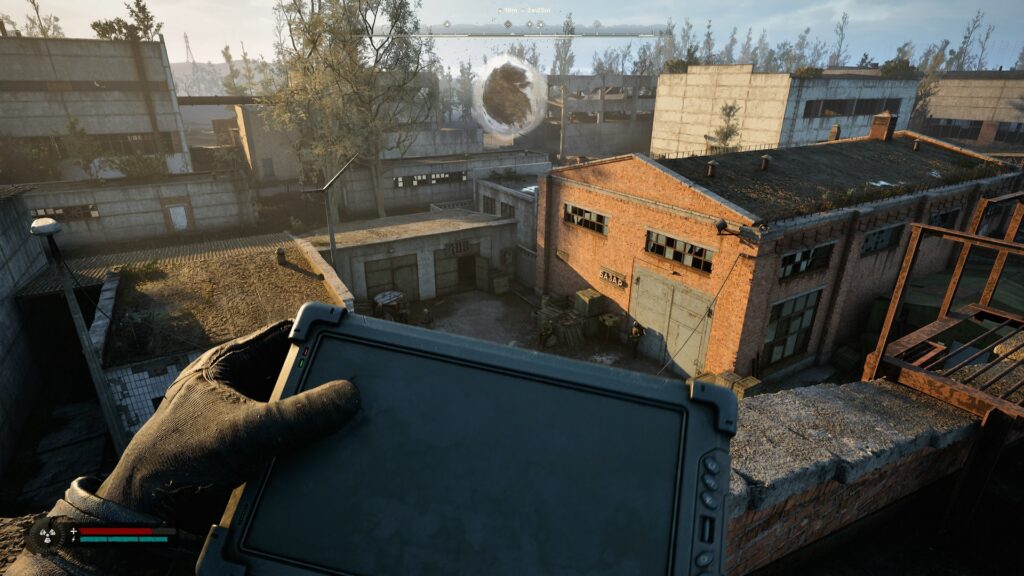
A once-dead zone comes to life
It was important to GSC to make the game as accurate as possible to real-life Chornobyl. Before the invasion, when the studio first embarked on the sequel, everyone who worked at the studio visited the exclusion zone, which was popular with tourists and only an hour from Kyiv.
“The team needed to understand what they were working with – to feel this unique place and its atmosphere. Most of the items in the game were scanned in the real exclusion zone,” says game director and GSC CEO Ievgen Grygorovych, who is married to Mariia Grygorovych.
“It’s a place of power, which is uniquely beautiful in every season – and yet it always looks different. You can see firsthand how a place, abandoned by humans due to a man-made disaster, has been reclaimed by nature. Trees grow, flowers bloom, but now without people. Isn’t this the perfect setting to depict a post-apocalyptic world?”
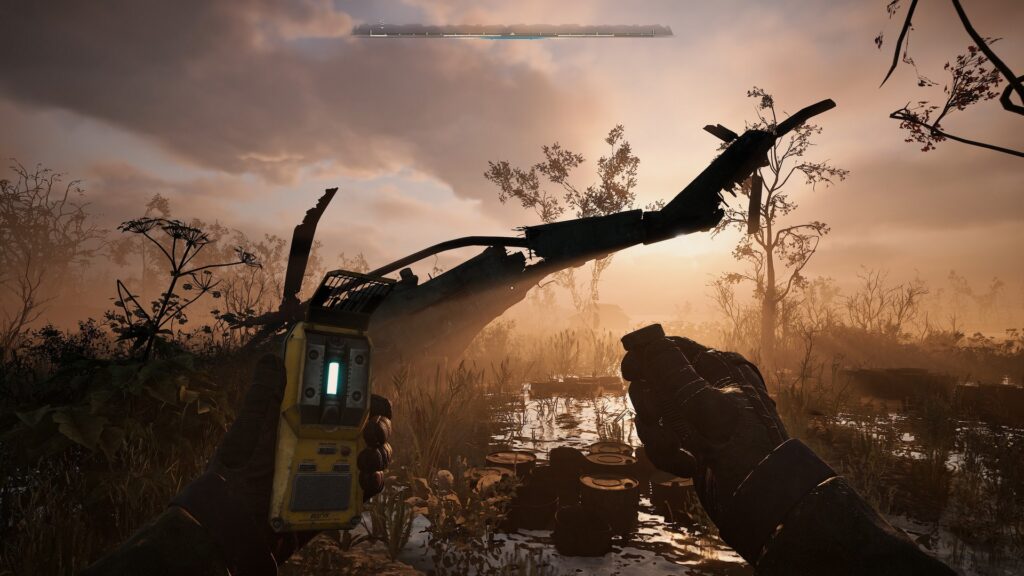
Grygorovych sees the zone as another character in the game. It can set rules, cause everyone to die or get hurt, and create special phenomena such as anomalies, arch-anomalies, mutants and radiation.
“Anyone can imagine themselves taking a train, plane or bus to the exclusion zone and becoming the main character. They don’t have any special skills,” Ievgen Grygorovych says. “This narrative style allows anyone to connect with the character and feel like they could be in their shoes. It makes the story more immersive and personal.”
‘Important things never come easy‘
Months before Mariia Grygorovych made her arrival into the world, her mother fled their home near the Chornobyl nuclear power plant after the disaster closed it in 1986, fearing the effects of radiation leaks on her unborn daughter.
Nearly 36 years later, Grygorovych, while leading the production of S.T.A.L.K.E.R. 2 as its creative director, also decided to leave her home in Ukraine. This time, it was out of concern for the safety of not only her family, but GSC – her chosen family.
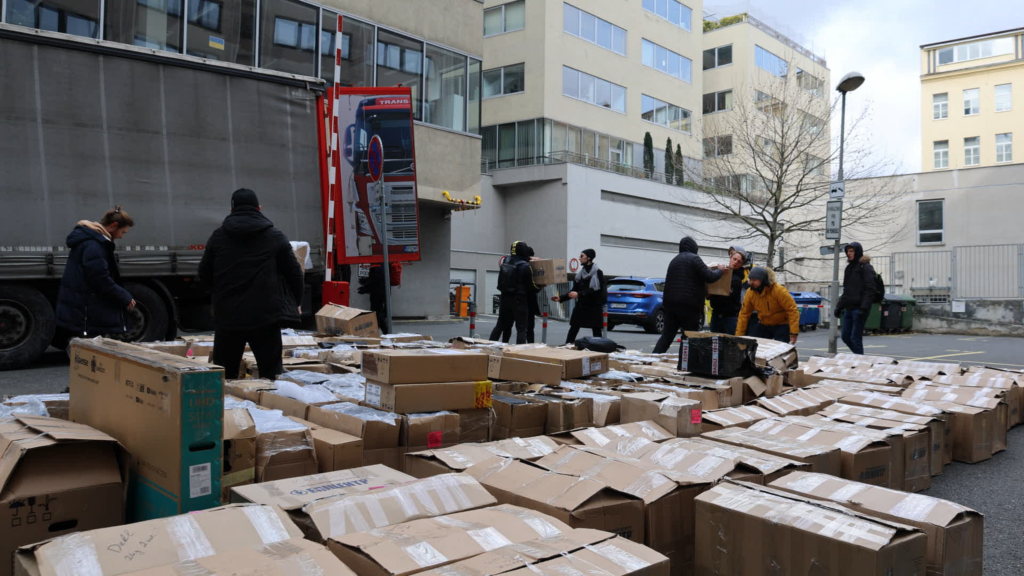
“This story influenced my view of life. Because no system can be more important than people,” she says in “War Game: The Making of S.T.A.L.K.E.R. 2,” an in-depth documentary based on the studio’s unprecedented journey to complete the game under such trying circumstances.
“We have a responsibility to our employees: If we start something, we do it until the end,” Grygorovych says in the documentary. “Important things never come easy.”
And for the GSC team, it hasn’t been easy at all these past two years.
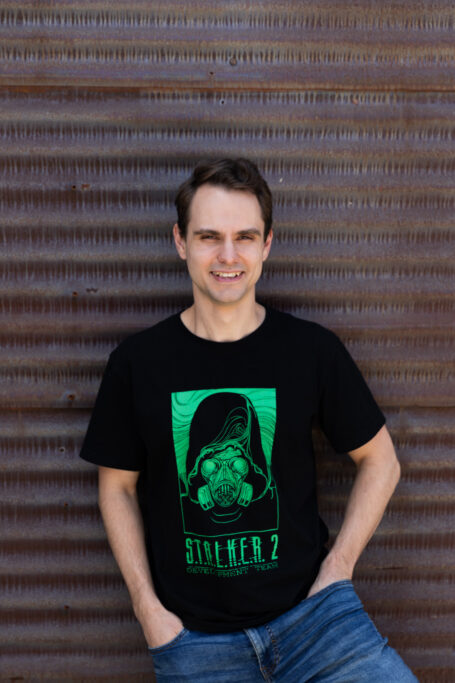
Made by Ukraine, made for the world
Once the team picked up its work in Prague, the cultural mission of the game gained more traction, showcasing Ukrainian pride through music, artwork, language and storytelling.
“We want to deliver a truly cultural Ukrainian product worldwide and that’s a whole different motivation,” says Mykyta Horodyvskyi, GSC’s community and social media manager.
“We wanted to make it clear that this is a Ukrainian game about the Ukrainian Chornobyl exclusion zone, made by Ukrainian developers, by a Ukrainian studio. And that through the game we are sharing our culture. We’re not broken, we are fighting and that’s represented in the game.”
Horodyvskyi, who joined the company in 2021, has been a PC gamer since the fourth grade and remembers playing the original S.T.A.L.K.E.R. – though as a young boy, it was so scary at first, he had to ask a friend to come over and help him navigate through the dark screens and monsters. (The rating for the sequel is ESRB Mature 17+**.)
Real life has desensitized him to an extent from those childhood fears. His family is about 40 miles from the frontlines, close enough to hear artillery shelling. His father has shown him a photo of a rocket that hit their garden in the countryside. His parents volunteer, visit the injured in hospitals, deliver supplies and take care of his wheelchair-bound grandparents.
“I offered them the option of moving to Prague, but they’re grown and if they don’t want to, I will not force them,” he says. “They’ve got an apartment there, car, work, friends. My father even wanted to join the army, but he was rejected because he’s over 60.”
Horodyvskyi talks to his family every week and he regularly checks on drone attacks. Once, he was watching livestreams of missiles hitting targets and one came perilously close to his family’s apartment.
“You get used to the most terrifying parts. I wish no one will ever experience this. No one should get used to this. Our parents and friends are living in danger every day,” he says. “It becomes so common a thing, which is so ridiculous.”
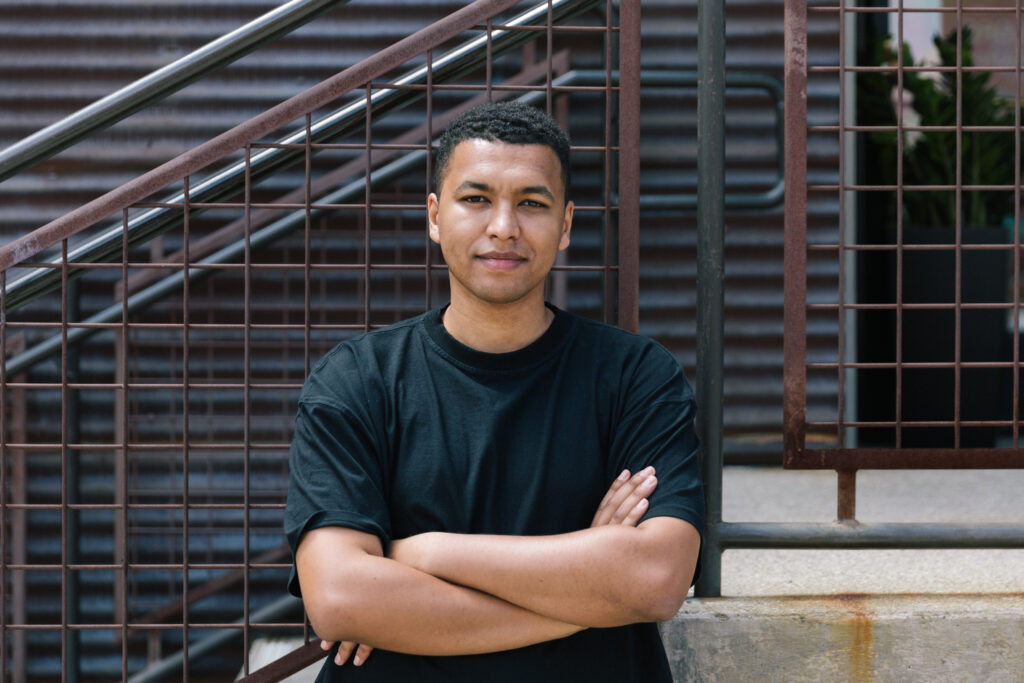
Belema Franklin George, a PR and marketing manager at GSC, has been with the company since 2018. At 29, he’s almost the same age as the studio, which will celebrate its 30th anniversary in 2025. He’s seen the company grow from 30 people to over 400.
He wakes up every morning and scrolls through the news to see if anything bad happened overnight.
“Something bad is always happening,” he says. “But if your family is OK, everything’s fine. Now I can get up and go. I don’t miss the physical things. I miss family. We had a really good Christmas before we left, one of the best. The memories, they help.”
Those working on the game who are still in Ukraine experience much of what the family and friends who remained behind are going through.
“Everyone who remains there faces unimaginable hardships daily,” Ievgen Grygorovych says. “We get chills when someone is away from their keyboard for too long, silently hoping that nothing serious has happened. It’s surreal that asking if your colleagues are safe has become part of the daily routine.”

As it has changed their lives, the war has also changed some aspects of the game.
“On a practical level, certain creative decisions needed to be revisited,” Mariia Grygorovych says. “For example, the sound of a siren will trigger PTSD in any Ukrainian, and sirens had been part of the game since early development. We had long discussions about how to approach such elements. Additionally, some cutscenes, dialogues and monologues now feel different because of the context the world finds itself in.”
There are parallels with how Ievgen Grygorovych describes the game and how their lives have played out these last two years: “A saga about individuals facing complex circumstances who evolve, learn and uncover key human virtues such as freedom, responsibility and empathy. Through both small and significant choices, players will develop and change alongside the characters in the story. By the end, they will be transformed, just like the main character.”
There’s no way for GSC’s teams to disconnect from the war, but they are finding solace in their shared experiences and goals.
“We are all together right now, we need to focus on that,” Horodyvskyi says. “And we are making the game. That’s of course the main priority. But helping each other, especially those who are in Kyiv or around Ukraine, that’s also the priority.”
*While Chernobyl is the established English spelling of the site of the famous nuclear accident, GSC prefers using the Ukrainian spelling.
** ESRB Mature 17+ is defined as content including Blood and Gore, Intense Violence, Strong Language, and Use of Alcohol and Tobacco.
Lead photo: Mariia Grygorovych, creative director at GSC (Photo by Maxmilian Dresler)

